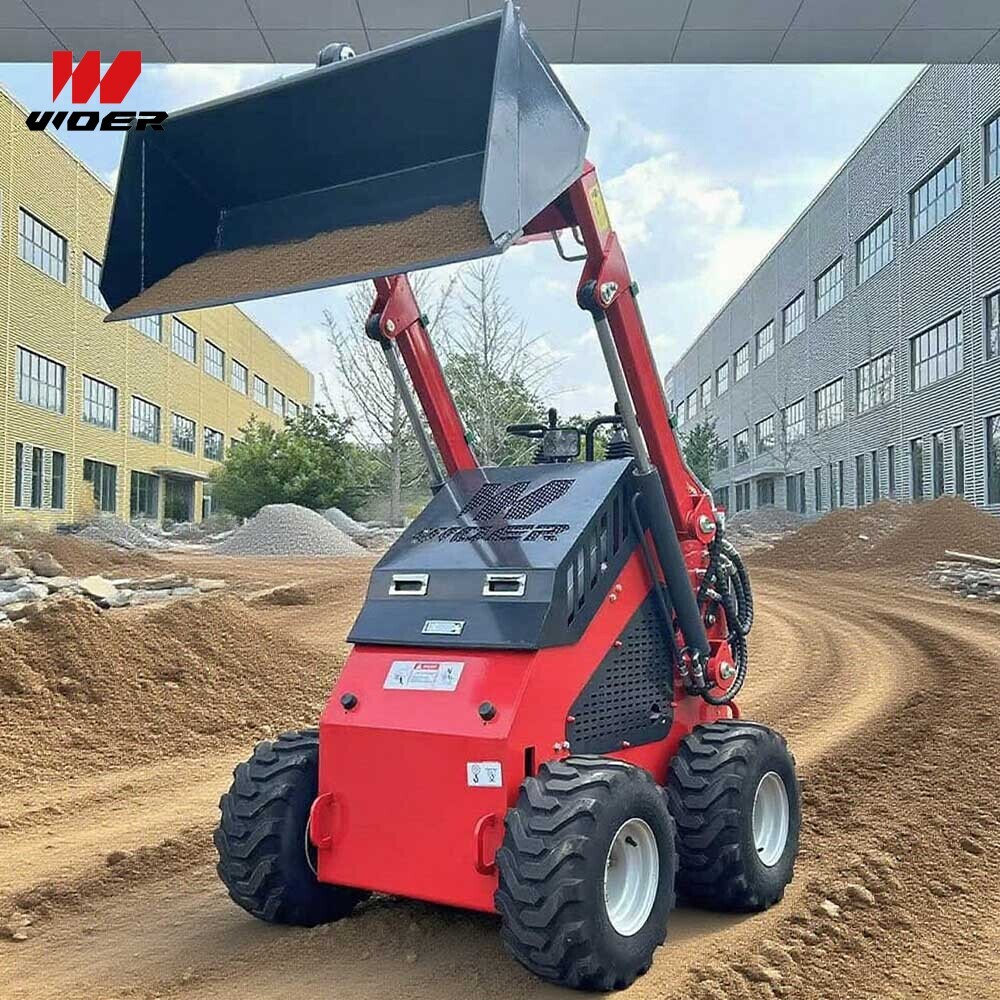Navigation
Contact us
Phone
Message

A clear, prioritized maintenance checklist helps operators keep a skid steer loader or mini skid steer loader reliable, safe and productive. This guide covers practical daily, weekly and long-term tasks tailored for track skid steer loaders to reduce downtime and extend service life.
Why regular maintenance matters for track skid steer loaders
Track skid steer loaders combine compact agility with traction advantages; however, tracked undercarriages, hydraulic systems and high-duty-cycle engines demand consistent care. Regular maintenance reduces unscheduled repairs, improves fuel efficiency, preserves resale value and keeps operators safe. For owners of a mini skid steer loader or a full-size skid loader, a disciplined regimen prevents minor issues from escalating into costly downtime.
Key components to monitor
Consistent inspection targets the areas that fail most often: undercarriage (tracks, rollers, sprockets), hydraulic system (hoses, fittings, reservoir), engine (oil, filters, cooling), electrical (battery, connectors), and attachments (coupler, pins, quick-attach). For track skid steer loader models and mini skid steer track loader variants, pay special attention to track tension, track wear patterns and track guide alignment.
Standards and industry practices
Follow manufacturer recommendations and applicable standards (for example, ISO and EN equipment maintenance guidelines). Adhering to industry practices similar to ASTM or JIS where relevant improves safety compliance. Keep documented service logs for warranty and resale credibility; these records support EEAT by demonstrating expertise and trustworthiness.
Practical checklist: frequency and actions
Below is a condensed but actionable schedule. Adjust intervals based on operating hours, environment (abrasive soils, forestry, demolition) and load profiles.
Daily pre-start and shutdown routine
Begin each shift with a walkaround: check for leaks, inspect tracks for embedded debris and torn rubber, verify coolant and oil levels. Run machine at idle briefly to check gauges and listen for abnormal noises. After work, clean dirt from the undercarriage and attachment areas; park on level ground and apply the parking brake. These simple steps prevent many hydraulic and track problems.
Common failure modes and how to avoid them
Hydraulic hose abrasion, track misalignment, overheating from clogged radiators, and battery corrosion top the list. Avoid these by routing hoses away from high-wear zones, maintaining correct track tension, cleaning cooling fins frequently, and applying anti-corrosion treatment to terminals. When you see symptoms—loss of power, irregular steering, or smoke—stop operation and diagnose immediately.
Special guidance for mini skid steer loader owners
Mini skid steer loaders and mini loader skid steer models often operate in confined, high-cycle applications; they need more frequent lubrication and filter changes. Compact models can also be more susceptible to overheating when used for extended loads; increase monitoring frequency if operating in hot climates or dense forestry environments.
Integrating equipment choices into your fleet strategy
When expanding your fleet or choosing attachments, consider machines built for your ground conditions. A skid steer loader with track offers superior flotation and traction in soft or muddy sites; skid loaders with tires may be preferable on hard surfaces. Balance purchase cost, maintenance complexity and expected utilization to minimize lifecycle cost.
Product spotlight and solution pairing
For heavy forestry or large-scale wood processing jobs where mobility and robust undercarriage design are priorities, pairing a track skid steer loader with a purpose-built chipping solution improves throughput and reduces material handling. Consider complementary equipment like Forestry Crawler Diesel Gas Mobile Skid Steer Loader Machine For Sale to form a productive, mobile processing unit that minimizes double-handling and preserves site access.
Troubleshooting quick reference
- Loss of hydraulic power: Check fluid level, look for leaks, inspect pump drive belt and engine rpm.
- Track slippage or uneven wear: Verify tension, inspect sprockets and rollers for damage.
- Overheating: Clean radiator, verify coolant mixture, inspect fan belt and thermostat operation.
- Electrical faults: Clean terminals, check fuses and cabling; perform voltage test under load.
Maintenance recordkeeping and parts sourcing
Keep a digital log of service hours, part replacements and oil analysis results. Using OEM or OEM-equivalent parts matched to model specifications preserves performance and warranty coverage. For components like seals and hydraulic hoses, source parts certified to ISO or JIS standards to ensure material compatibility and pressure ratings.
Why choose us and next steps
We provide industry-grade experience with tracked skid steer solutions and aftermarket support tailored to forestry, construction and landscaping applications. Our technicians follow manufacturer protocols and international standards to maximize uptime. Contact our sales team to discuss fleet-specific maintenance packages, preventive service agreements, or to request OEM part sourcing. For detailed product inquiries or sourcing, reference the product link above and ask for service plan options that match your operating profile.
Contact and service invitation
If you need a tailored maintenance checklist or a service quote for mini skid steer loader or full-size track loader skid steer models, reach out for an equipment assessment. A brief inspection can identify quick wins to lower operating costs and increase machine availability.

This stunning beach house property is a true oasis, nestled in a serene coastal community with direct access to the beach.
Contact
West Street, Melbourne Victoria 3000 Australia